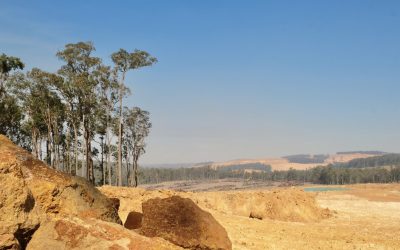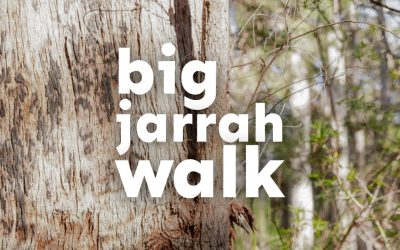
The Northern Jarrah Forests are some of the most beautiful, diverse and vulnerable forests on Earth, but they are under threat from almost every angle.
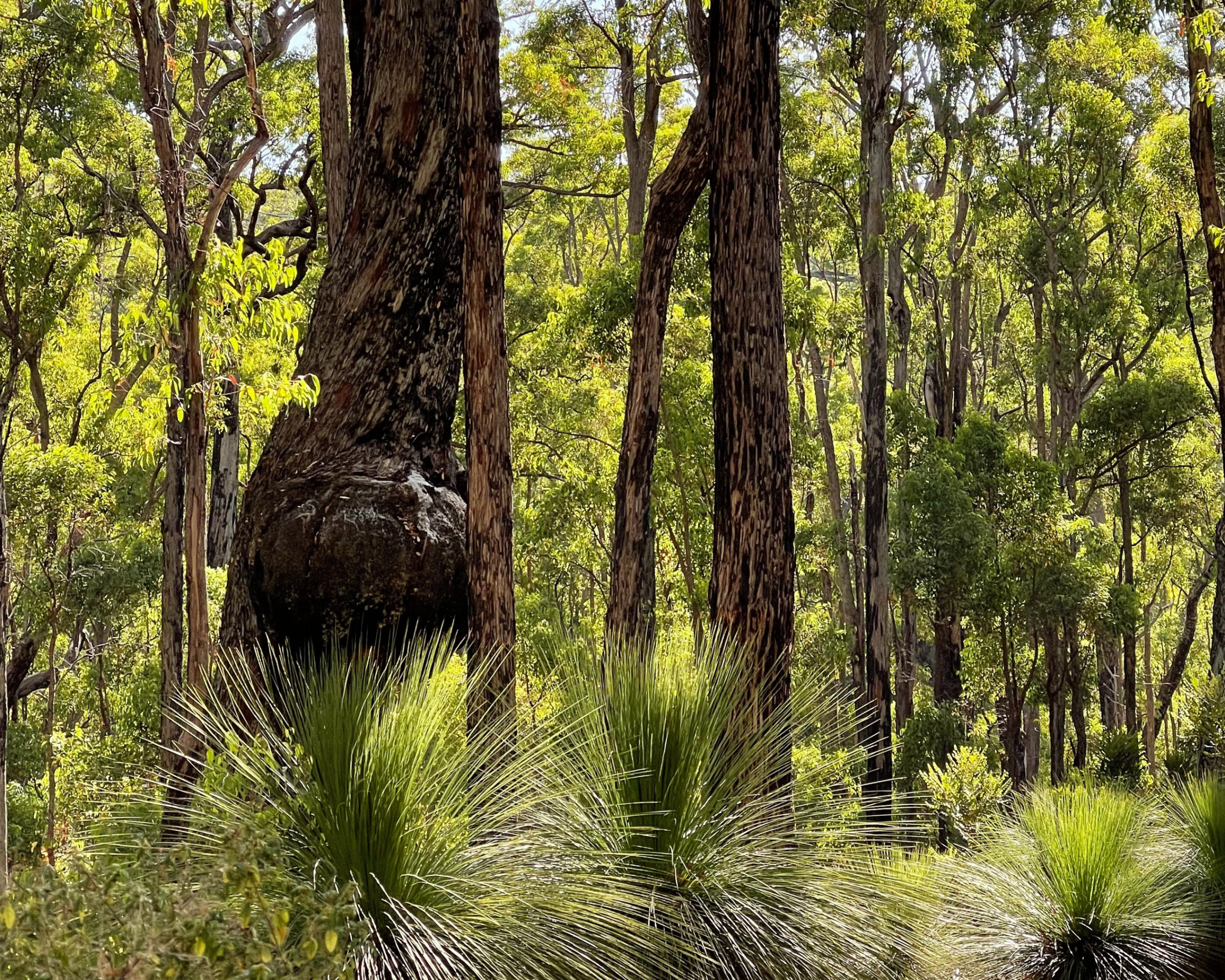
The Northern Jarrah forests are one of a handful of Australian ecosystems most at risk of collapse due to the drying and warming climate. We’ve already seen significant forest collapse due to lack of water and longer, hotter summers, and this will worsen as climate change continues.
The WA Government ended commercial native forest logging at the start of 2024.
But another major threat to Jarrah forests continues, mining.
Right now, Alcoa, a US bauxite mining corporation, is seeking huge expansions which would result in the clearing of a further 7,500ha of the Northern Jarrah Forests over the next fifteen years. This is being assessed by the Environmental Protection Authority (EPA), alongside a further 3,958ha clearing in Alcoa’s current Mining Management Plan.

Fellow bauxite miner South32 has already cleared 8,895ha of Jarrah forests, and in early 2025 got the green light to clear a further 3,855ha, by former Environment Minister Tanya Plibersek.
Other companies are also eyeing off minerals below WA’s precious Jarrah forests. This includes Telupac who have applications for exploration licenses over 126,743ha of forest ecosystems.
These are just a few of the corporations who want to destroy this unique ecosystem for their profit.
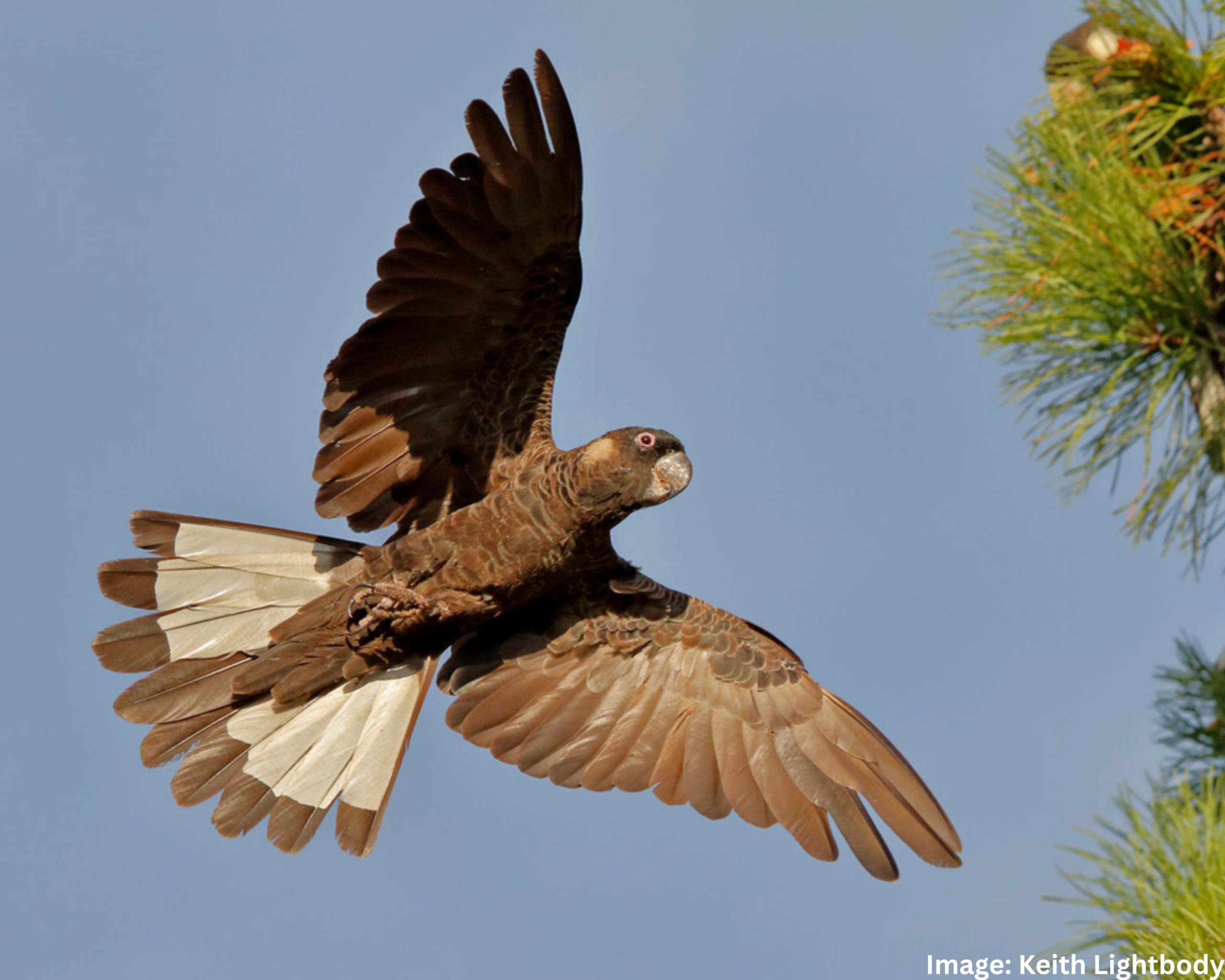
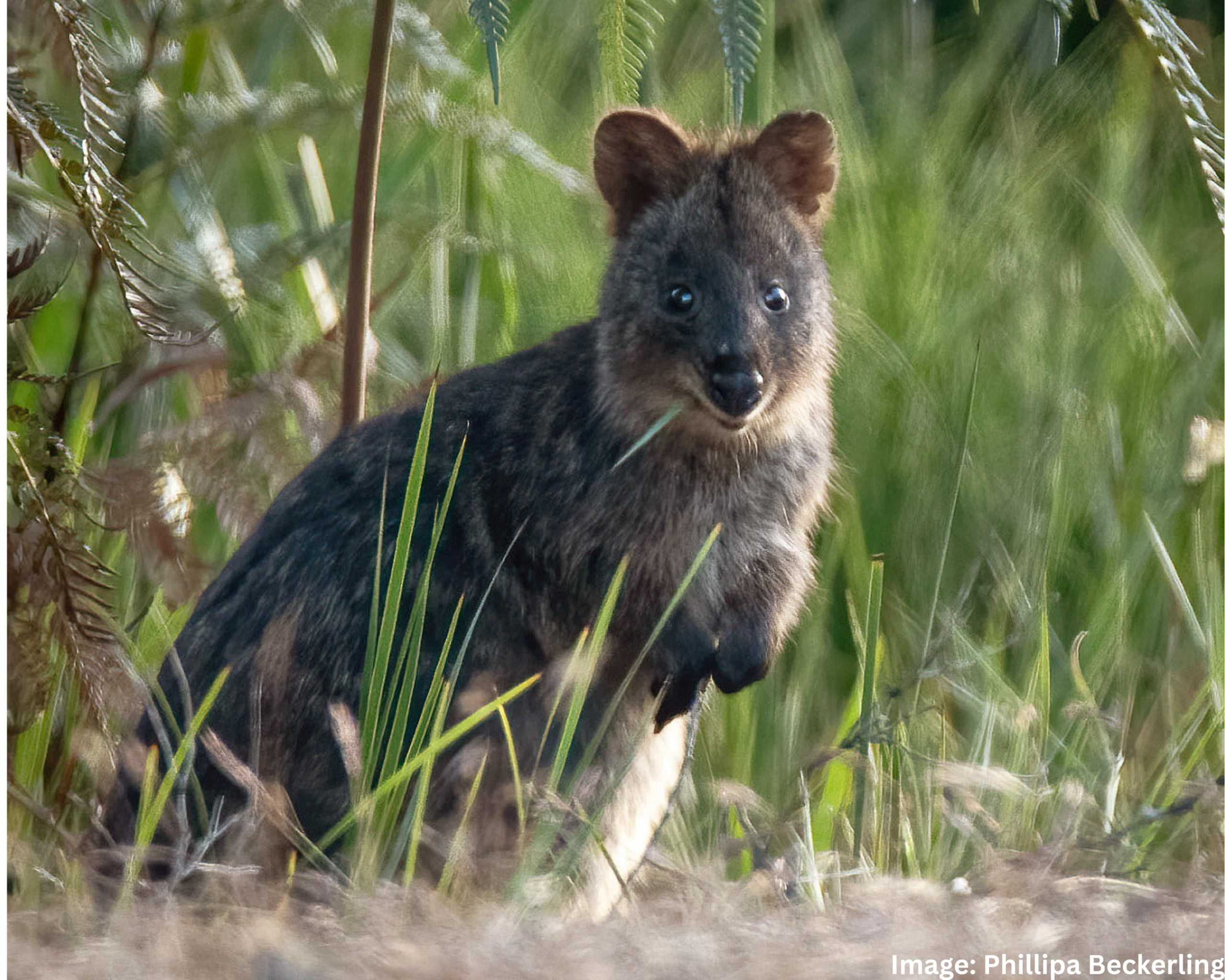
After a powerful community campaign, Rio Tinto announced in 2023 that it would withdraw applications to explore for minerals in 107,000ha of forests.
As a movement, we are strong. We have kicked corporations out of WA’s forests before, and we can do it again.
We’re coming together to formally object to Telupac and Alcoa’s applications stop them destroying even more fragile forest ecosystems.
The role of WA’s government to stop mining in the Northern Jarrah Forests
At the 2021 UN Climate Change Conference COP 26, more than 100 countries agreed to end deforestation by 2030 in recognition of the key role native forests play in drawing carbon out of the atmosphere.
For Australia to adhere to its promise, it must reject mining in Northern Jarrah Forests.
Forest collapse should be ringing alarm bells for our Government. Native forests are our best allies in mitigating and building local resilience to the escalating impacts of climate change and biodiversity decline.

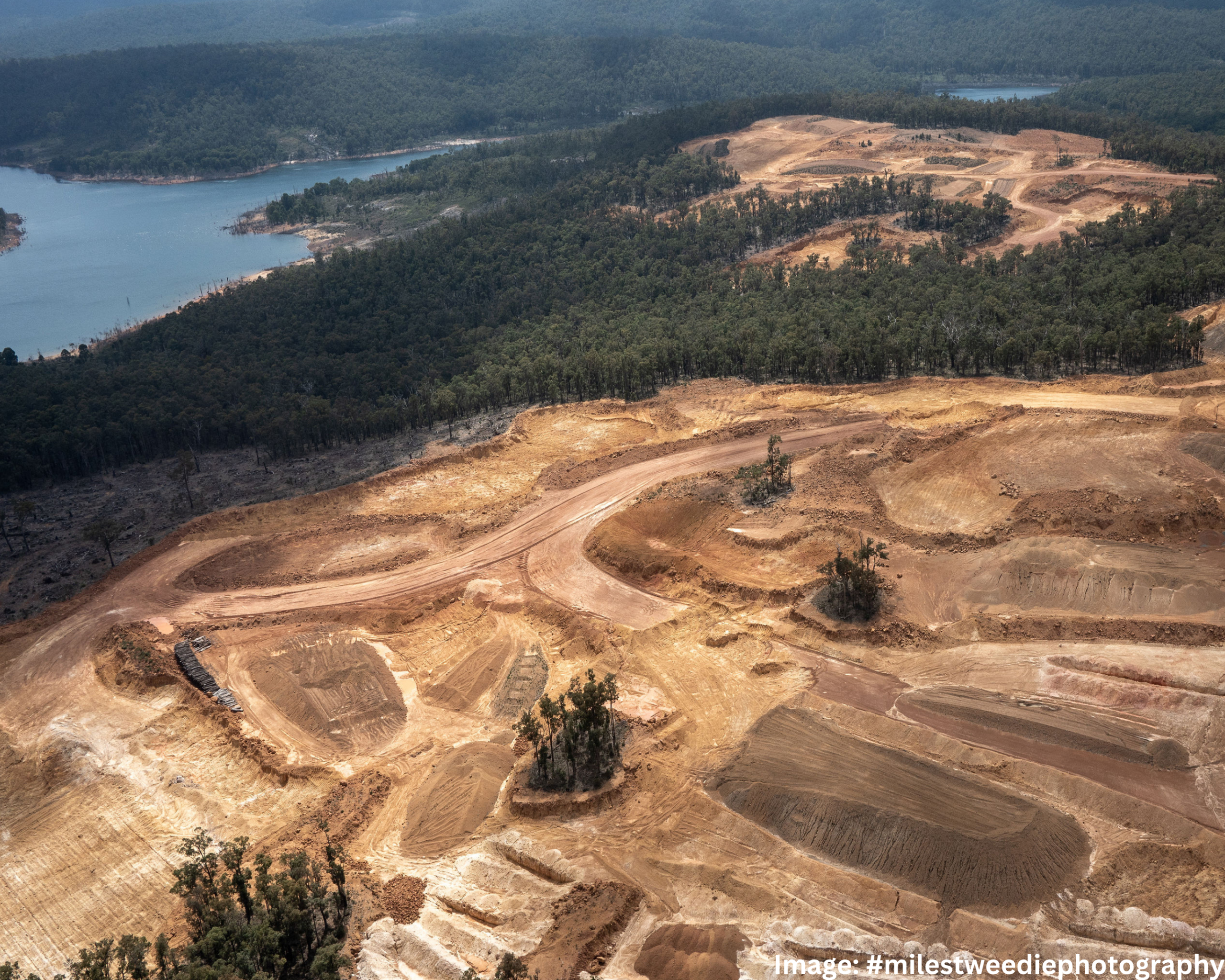
A Thousand Cuts
WAFA, Wilderness Society and Conservation Council of WA have published this report to provide information and analysis regarding the impacts of bauxite mining in the Northern Jarrah Forests.
The Northern Jarrah Forests are one of a handful of Australian ecosystems under particular threat of collapse due to climate change. They are highly diverse and home to an incredible number and variety of plants and animals as well as being vital
to water quality and supply for the Perth metropolitan region and South West forests.
West Australians are increasingly concerned with the protection of this magnificent place. The report provides both an overview and high level of detail on the region and the threat posed by proposed mining expansions.
It will assist in advocacy, research and communication as we work towards the protection of the Northern Jarrah Forests in secure conservation areas.
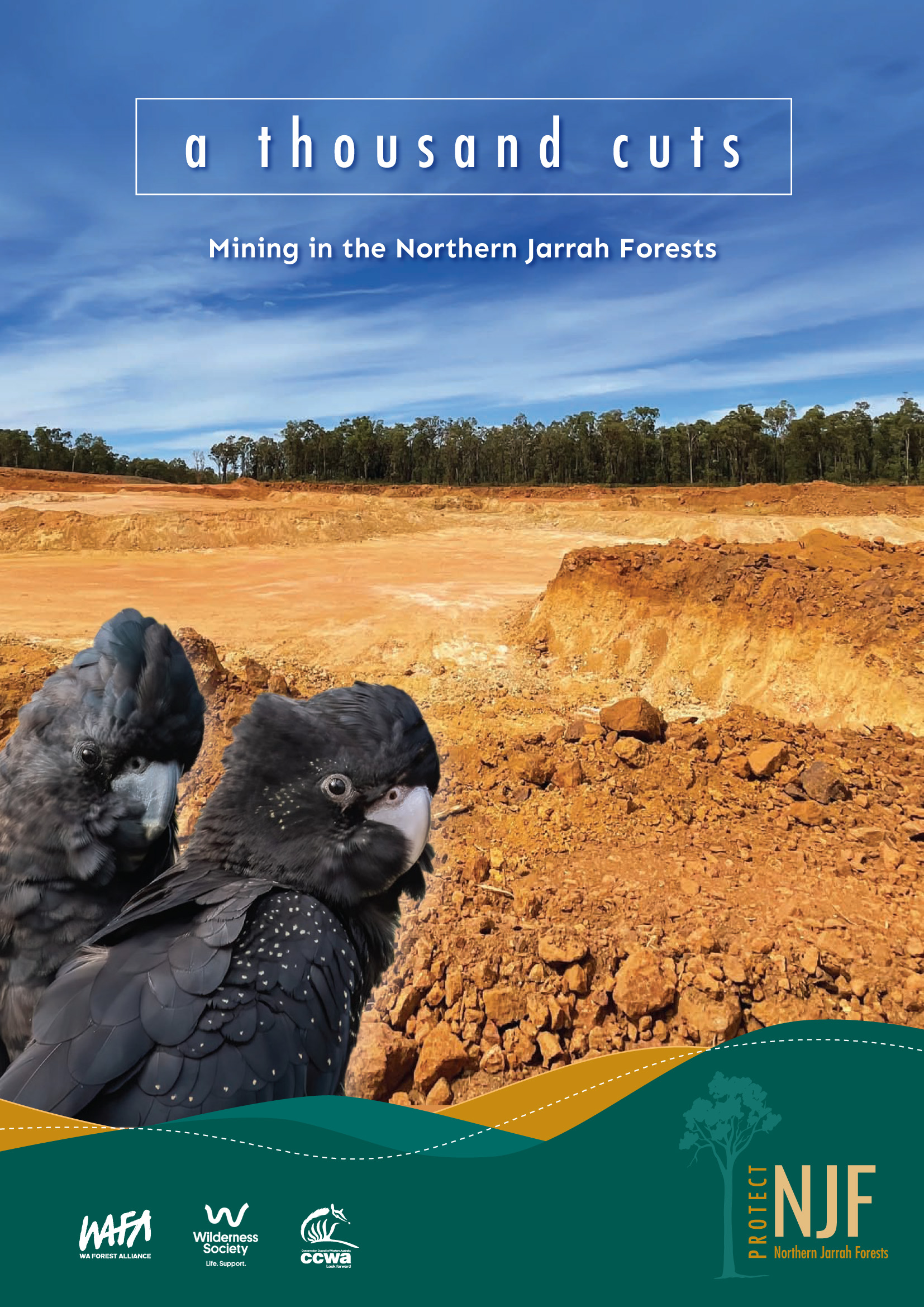
Latest news
Thousands rally for Jarrah forests
Denmark-based Accredited Mental Health Practitioner and Clinical Social Worker Ricky England will be walking 250km from Dwellingup to Perth over 10 days starting this Saturday 24 May, until 2 June.
Conservation groups slam Alcoa’s “reckless” bauxite mine expansion plans
Conservation groups have slammed a proposal by US mining company Alcoa, that would see thousands of hectares of Western Australia’s unique jarrah forest destroyed for bauxite mining operations in Perth’s Darling Range water catchment zone.
Big Jarrah Walk steps-out to stop mining of WA’s Northern Jarrah Forests
Denmark-based Accredited Mental Health Practitioner and Clinical Social Worker Ricky England will be walking 250km from Dwellingup to Perth over 10 days starting this Saturday 24 May, until 2 June.
Take Action
We’re part of the End Forest Mining alliance of groups, representing a growing number of people who want to protect WA’s Northern Jarrah Forests. We are calling on the Cook Government to end forest mining, stop Alcoa threatening our water and forests and protect WA’s magnificent forests in National Parks.


